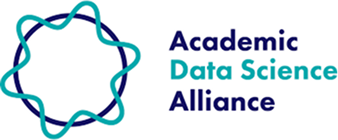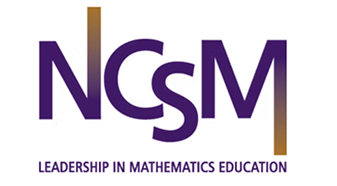Iteration, validation, & multiple explanations
Regularly practice identifying alternative explanations for a result from data, both for interim steps and post-analysis conclusions.
K–2 Competencies
Categorize, count, or measure variables and verify the categorization with peers for agreement.
Classroom resources
Data Science Starter Kit Module 4: Drawing Conclusions - Interpreting Problems and Results
Welcome to one of the most critical skills in data science—learning how to draw valid conclusions from data and understanding what those conclusions can and cannot tell us. This module focuses on the thinking skills that separate good data science from misleading claims.🔗
Interpreting Problems and Results isn’t about complex statistical tests or advanced mathematics. It’s about developing the intellectual honesty and critical thinking skills to say, “Based on this data, here’s what we can reasonably conclude, here’s what we’re not sure about, and here’s what we still need to investigate.”
3–5 Competencies
Estimate the total count of a characteristic within a group, providing several reasons to support the accuracy of your estimate.
Evaluate whether the count of a characteristic in one group differs from that in another group, considering various reasons for this difference.
Classroom resources
Data Science Starter Kit Module 4: Drawing Conclusions - Interpreting Problems and Results
Welcome to one of the most critical skills in data science—learning how to draw valid conclusions from data and understanding what those conclusions can and cannot tell us. This module focuses on the thinking skills that separate good data science from misleading claims.🔗
Interpreting Problems and Results isn’t about complex statistical tests or advanced mathematics. It’s about developing the intellectual honesty and critical thinking skills to say, “Based on this data, here’s what we can reasonably conclude, here’s what we’re not sure about, and here’s what we still need to investigate.”
6–8 Competencies
Predict whether the variability of one variable tends to increase or decrease in relation to another variable, providing evidence and reasoning to support the prediction.
State a prediction or answer to an investigation question at the beginning, midway, and at the end of the analysis exercise while asking why this may be true each time.
Classroom resources
Blinking Out Activity by DataClassroom
The purpose of thislesson is to help students understand how long-term ecological data collectionenables scientists to identify environmental changes and population trends thatwould be invisible with short-term studies. Students will analyze real fireflypopulation data to make evidence-based claims about species decline whilelearning about sampling effort, data collection challenges, and the scientificmethod in environmental research.
Data Science Starter Kit Module 4: Drawing Conclusions - Interpreting Problems and Results
Welcome to one of the most critical skills in data science—learning how to draw valid conclusions from data and understanding what those conclusions can and cannot tell us. This module focuses on the thinking skills that separate good data science from misleading claims.🔗
Interpreting Problems and Results isn’t about complex statistical tests or advanced mathematics. It’s about developing the intellectual honesty and critical thinking skills to say, “Based on this data, here’s what we can reasonably conclude, here’s what we’re not sure about, and here’s what we still need to investigate.”
9–10 Competencies
Identify various possible explanations for an observed association by investigating and comparing relationships between variables within a dataset.
Regularly log questions during data analysis and identify additional factors that may clarify associations. e.g., knowing X would be helpful because it would explain or rule out Y
Classroom resources
Coffee Filter Parachutes by DataClassroom
The purpose of this lesson is to help students apply engineering design principles and data analysis to solve real-world problems by analyzing parachute performance data and making evidence-based recommendations for different stakeholders. Students will use physics concepts, mathematical modeling, and statistical analysis to evaluate competing designs and communicate technical recommendations to diverse audiences with different performance requirements.
Data Science Starter Kit Module 4: Drawing Conclusions - Interpreting Problems and Results
Welcome to one of the most critical skills in data science—learning how to draw valid conclusions from data and understanding what those conclusions can and cannot tell us. This module focuses on the thinking skills that separate good data science from misleading claims.🔗
Interpreting Problems and Results isn’t about complex statistical tests or advanced mathematics. It’s about developing the intellectual honesty and critical thinking skills to say, “Based on this data, here’s what we can reasonably conclude, here’s what we’re not sure about, and here’s what we still need to investigate.”
11–12 Competencies
Highlight unusual associations or outcomes in an analysis document by validating analysis steps and investigating other parts of the dataset.
Identify potential counter-arguments or alternative explanations that may refute one's conclusions drawn from data, and suggest mitigation strategies that could be tried in the future with additional data or new research.
Classroom resources
Gene Expression in Stem Cells by DataClassroom
The purpose of this lesson is to help students apply advanced statistical analysis and bioinformatics approaches to real genomic research data, investigating gene expression differences between specialized cells and stem cells. Students will conduct sophisticated hypothesis testing, evaluate data distributions, perform multiple comparison analyses, and interpret biological significance of statistical findings in the context of cutting-edge regenerative medicine research.
Data Science Starter Kit Module 4: Drawing Conclusions - Interpreting Problems and Results
Welcome to one of the most critical skills in data science—learning how to draw valid conclusions from data and understanding what those conclusions can and cannot tell us. This module focuses on the thinking skills that separate good data science from misleading claims.🔗
Interpreting Problems and Results isn’t about complex statistical tests or advanced mathematics. It’s about developing the intellectual honesty and critical thinking skills to say, “Based on this data, here’s what we can reasonably conclude, here’s what we’re not sure about, and here’s what we still need to investigate.”
Advanced Competencies
Document analysis steps and errors while implementing validation checks in the software for data wrangling.
Execute an alternative analysis plan to validate a significantly different result from the initial method.
Classroom resources
Support other teachers by sharing a resource
Do you have a lesson plan, video, or tip that could help others teaching this topic?
Share feedback on the Learning Progressions
Your feedback helps us improve these progressions for teachers around the world. Thank you!
Share feedback on the Learning Progressions
Your feedback helps us improve these progressions for teachers around the world. Thank you!
Share a classroom resource
Suggesting a resource helps students around the world learn essential data science skills.









.png)














